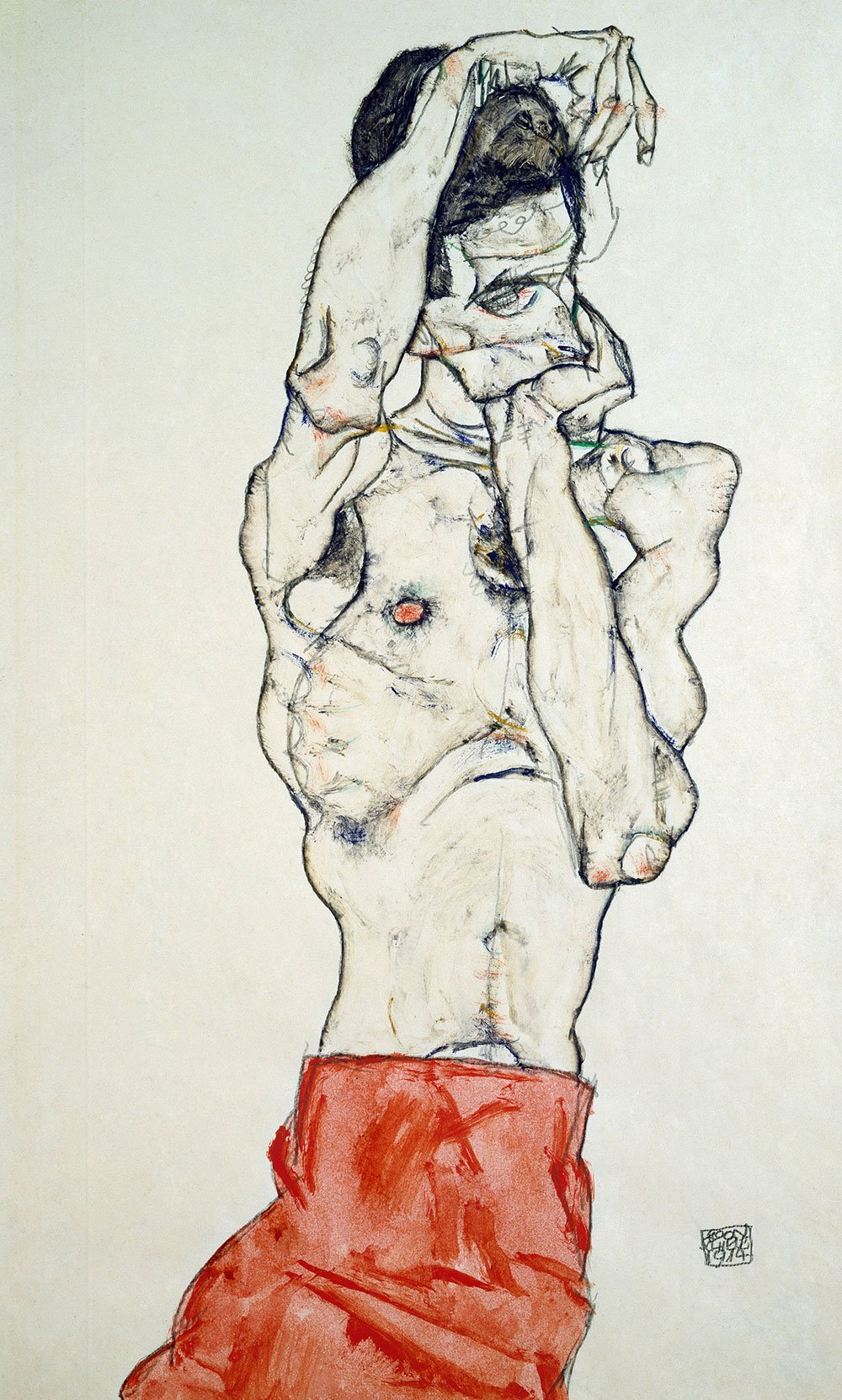
Credit: The Albertina Museum, Vienna
When he first came on to the Vienna art scene, Egon Schiele hero-worshipped Gustav Klimt. Once they met the two

The actor Rob Houchen chooses a bold and challenging Egon Schiele work.
‘I have loved the work of Egon Schiele since studying him during my GCSE in Fine Art. I was drawn to the unashamed expression in his art and how unafraid he was to look vulnerable, sexual and ugly. It moved me to know someone could express themself so freely and I, one day, hoped to do the same. Schiele’s self- portraits have always been my favourites — this male semi-nude hangs in my bathroom and I have a line drawing of another tattooed on me. The root of my adoration for this piece is the emotional mystery.
‘The subject is twisted away from the viewer, contorted into this uncomfortable shape, but could actually seem rested and pensive. They hold their face in thought, yet I feel they know we are watching, as if drawing us in, teasing us, performing almost, but with feigned shyness. Personally, it stirs a reflection of my own insecurities, in its fragility, its human vulnerability and nakedness — and its possible darkness.’
Rob Houchen is an actor. He played Marius in Les Miserables in the West End and in the staged concert of the musical, screened worldwide.
An emaciated body stretches across the paper, one arm looped protectively over the head. The ribs fan out like a knuckleduster under pale skin and a red cloth wrapped around the man’s narrow waist is the same colour as his nipple, which looks raw and ulcerous. He doesn’t look at us, but twists his head away, his left hand pressed against his mouth as if to silence himself. The high forehead, dark hair and attenuated form all point to this being a self-portrait.
Egon Schiele drew and painted his own body from the age of 16. It was a vehicle through which he expressed his feelings and anxieties about the modern world that had engulfed Vienna. The early 20th century was a time of heightened awareness of the body — developments in psychiatry, criminology, medicine and sexual studies had led to a systemic questioning of what it meant to be a man. Schiele had been arrested two years before this work was completed and imprisoned for 24 days, because his art was considered indecent. Others saw its raw power, with one critic who reviewed his 1915 exhibition in Vienna saying that his interpretation of the body was ‘born from the tortured shudders of a suffering soul’.
His monogram can be seen on this drawing dating the work to 1914, the beginning of the First World War. Schiele was stationed in Prague during the war, before falling victim to Spanish flu, which killed an estimated 50 million people worldwide in 1918.

When he first came on to the Vienna art scene, Egon Schiele hero-worshipped Gustav Klimt. Once they met the two

Industrialist and explorer Sir David Hempleman-Adams selects a beguiling Egon Schiele work.